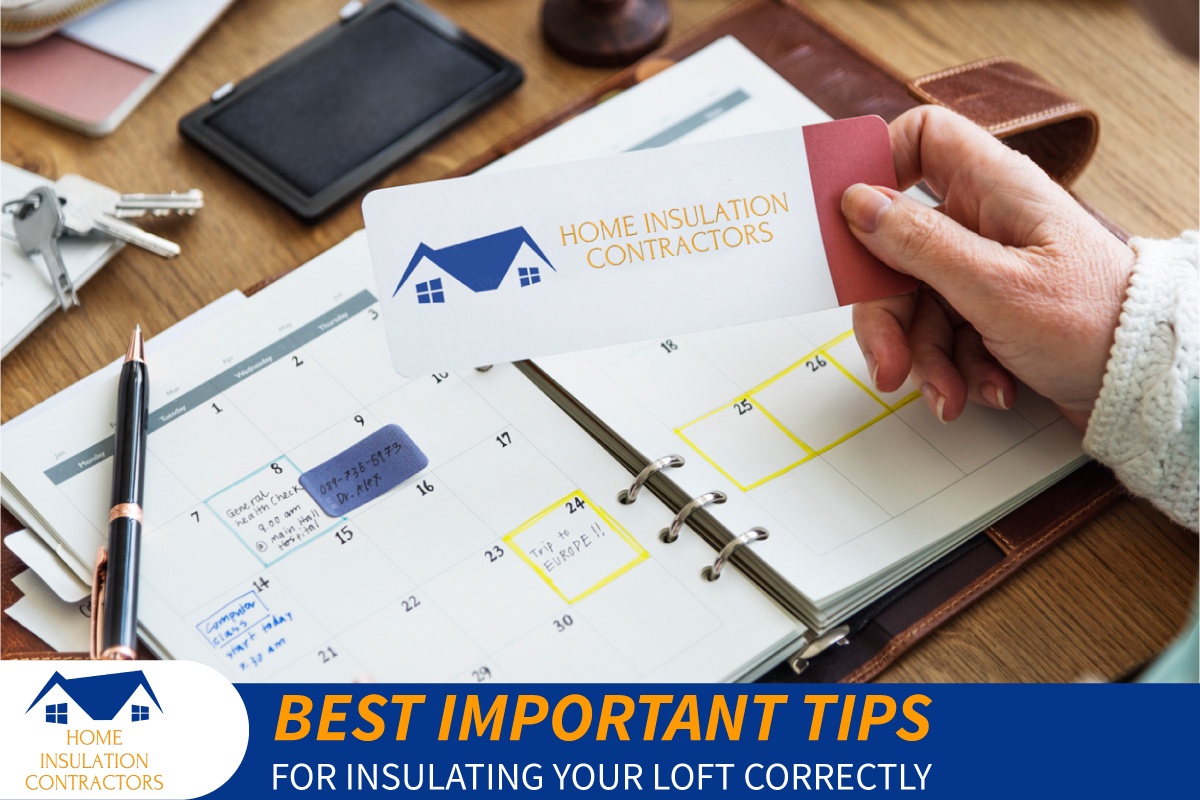Best Important Tips for Insulating your Loft Correctly

In your attic space, loft insulation acts as a heat-trapping material barrier. It can be positioned either between the rafters or the joists, which are the horizontal beams that make up the attic floor.
To put it simply, loft insulation prevents warm air from escaping your home through the roof by trapping it inside. It will nevertheless permit moisture to flow through it if fitted properly, preventing the probability of condensation.
Many insulating materials can be employed for offering quality loft insulation. Choosing the best loft insulation material UK for your property requires taking into account several aspects, including cost, efficiency, applicability, and environmental friendliness which is completely endorsed by contractors of Home Insulation Contractors.
It is also recommended to search, for ‘‘best loft insulators near me’’ or at least try to understand the average loft insulation cost in the UK before investing in a loft insulation project.
Key Tips for Properly Insulating Your Loft
It is difficult to determine which kind of loft insulation material is the “best” as all the types have different functions and uses. Your choice of loft insulation will be greatly influenced by how you intend to utilise the space. Apart from any particular difficulties that your loft's shape may present, it is not a very difficult task to insulate your loft by keeping a few essential tips in mind such as:
Understanding the type of Insulation
It is crucial to understand various loft insulation types available in the market that serve different functions. For instance, blanket insulation is typically constructed of rock, glass, or mineral fibre. And it is the most popular type, which shields very well but can be too thick to fit in tight places or around obstacles. The most expensive method of insulating a loft hatch is sheet insulation.
Even though insulating the bottom of your roof typically results in excellent heat retention, it must also be set up by a trained insulation expert. Loose-fill insulation is practical for topping off existing insulation in attics and fits well between joists with variable spacing or around obstacles.
Similarly, spray foam insulation is another reliable option. Because it is installed on the roof's underneath producing a warm space rather than at floor level, this sort of insulation is perfect for homeowners who would like to utilize their loft as a liveable room. It is the best available option for loft insulation of very high quality, but it can be expensive and requires skilled installation professionals.
When to Hire a Professional to Install Loft Insulation
Several insulation kinds can be installed by the homeowner. Yet it's important to understand when to take advantage of a specialised expertise. As we've already indicated, sheet insulation and foam insulation are the costliest kind of loft insulation and require professional installation. Similarly, a professional insulation expert with the required tools is also needed to properly install loose-fill and blown-fibre insulation.
Loft Insulation for Both Flat and Pitched roofs
There are distinct kinds of insulation for flat roofs and for pitched roofs, and an expert can assist you to choose which one is ideal for your home. It is reasonably ideal if a flat roof is insulated from above. The waterproof layer of the roof may be added first, followed by a layer of firm insulation board, and then a clean weather-proof layer may be applied on top of that.
Your flat roof alternatively could be upturned. Foam insulation is placed over the weather membrane in this way, shielding it from heat and cold.
Eschew Common Errors While Installing Loft Insulation
An adequate degree of insulation is included in the majority of lofts. But very frequently, it isn't put or installed properly, and is being compressed by loft boarding and stacked things, or very often it isn't the recommended 270mm thick. The insulation is frequently tailored to fit between rafters or joists, which is a frequent error.
Installing it as a separate layer without insulation gaps is significantly better. In contrast to the conventional cold deck roof design, a warm deck roof without air flow necessitates the use of a vapour barrier to stop condensation.
Conclusion
One of the best methods to lower heating costs, increase your property’s energy efficiency, and maintain a comfortable house throughout the cooler months of the year is to properly insulate a loft.
The right amount of insulation is essential for it to be fully effective, even though you may already have some. Another important tip to keep in mind is that you can still insulate a flat roof, but it is preferable to insulate it from the outside rather than the inside. It is expected that condensation issues may result from insulating it from the outside. Insulation should be installed at the rafter level if the loft is going to serve as living space to provide a warm roof.